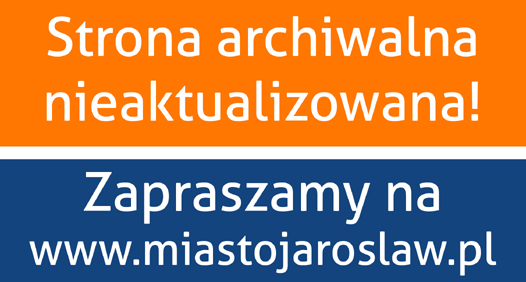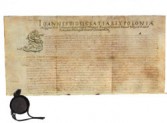Jarosław, a city located on the high edge of the left terrace of the San river boasts a long and interesting history. Already at the end of the 14th century it was listed among the most affluent cities of the Crown. Originally, Jarosław was situated on the neighbouring hill, but during the last quarter of the 14th century it was rechartered with Magdeburg Rights and relocated to the area of the present-day Old Town. Moreover, by virtue of a royal privilege granted at the end of the 14th century Jarosław became a private city. The great families of the Tarnowscy, Sieniawscy, Zamoyscy, Lubomirscy, Czartoryscy as well as Zofia Kostkowa, Anna Ostrogska, the famous hetman Jan Karol Chodkiewicz or the future king of Poland, Jan III Sobieski, were only a few of the city owners.
In the course of the 16th -1 th centuries, the city of Jarosław gained European renown due to its market fairs. The famous August Market Fair lasting four weeks was visited by many merchants not only from the entire Europe, but also from the Middle East. Mighty merchant carts pulled by some, or more often a dozen of horses, mainly with "western" goods, camel caravans laden with "eastern" goods headed for the market fair in Jarosław, in order to barter. Everything was on sale, from salt and wheat, through different kinds of fabrics, metalwork, up to luxury items - to name only some of the products. According to the opinions of the people living in that period, Jarosław was the largest trading centre in central-eastern Europe after Frankfurt am Main. Apart from the goods conveyed to the market fair, huge herds of cattle were driven there mainly from the East. It happened that during one year up to 40 thousand ox and 20 thousand horses were brought to the Jarosław fair. At the end of the 16th century Jarosław additionally became an important harbour on the San. Goods, the most important of which were cereals, were delivered there even from very distant places in order to be later floated down to Gdańsk, from where other wares were brought to the city, among others large amounts of herring.
This huge trading activity concentrated mainly in the city centre. The marketplace was the heart of the city. The surface of this square, which now seems disproportionate, was at that time entirely exploited. In the Old Polish period, the marketplace was perceived as a compact urban interior. The demolition of the parish-church, the arcades encircling the marketplace and the corner houses in Spytka street has considerably shaken its proportions and has taken away the impression of a closed square.
We would like to invite you to visit Jarosław. We suggest starting your tour at the marketplace.
Krystyna Kieferling, Zofia Kostka-Bieńkowska





















